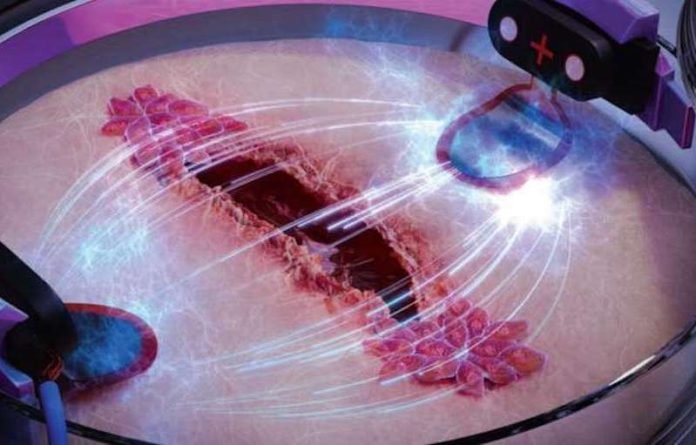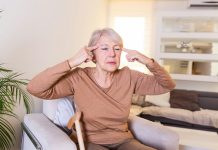
Chronic wounds can be a major problem for people with diabetes and the elderly.
These wounds can take a long time to heal, and in some extreme cases, they can even lead to amputation.
However, researchers from Chalmers University of Technology in Sweden and elsewhere have developed a new method that uses electric stimulation to speed up the healing process, making wounds heal up to three times faster.
The researchers discovered that people with diabetes, spinal injuries, or poor blood circulation are at greater risk of infection and chronic wounds.
These wounds can lead to serious complications, such as amputation, which can be life-altering.
The researchers set out to find a new way to speed up the healing process and prevent these complications.
The team used an old hypothesis that electric stimulation of damaged skin can be used to heal wounds. The idea is that skin cells are electrotactic, meaning that they move directionally in electric fields.
The researchers investigated how this principle can be used to electrically guide the cells and make wounds heal faster.
They used a tiny engineered chip to compare wound healing in artificial skin, stimulating one wound with electricity and letting one heal without electricity. The results were remarkable.
The researchers found that wounds that were treated with electric stimulation healed significantly faster than those that were not.
In fact, wounds that were stimulated with an electric field healed three times as fast as those that healed without the stimulation.
The team also focused on wound healing in connection with diabetes, a growing health problem worldwide.
They found that electric stimulation could increase the speed of healing for wounds that were affected by diabetes, making them heal almost as quickly as wounds in healthy skin cells.
The researchers recently received a large grant that will allow them to continue their research in the field.
They hope to develop wound healing products that generate enough electric field strength and stimulate in the right way for each individual.
The ultimate goal is to develop a concept to scan wounds and adapt the stimulation based on the individual wound, providing effective treatment for individuals with slow-healing wounds in the future.
How to heal wounds fast
There are several ways to promote wound healing and speed up the process:
Keep the wound clean: Clean the wound with soap and water, and make sure to remove any dirt or debris. Apply an antiseptic solution or ointment to prevent infection.
Keep the wound moist: Cover the wound with a sterile dressing or bandage to keep it moist. This can help to promote cell growth and speed up the healing process.
Apply topical treatments: Topical treatments such as aloe vera, honey, or silver dressings can help to soothe the wound and promote healing.
Eat a healthy diet: Eating a balanced diet rich in vitamins and minerals can help to support the healing process. Foods high in protein, vitamin C, and zinc are particularly important for wound healing.
Manage any underlying health conditions: If you have an underlying health condition that is slowing down the healing process, such as diabetes, it is important to manage it effectively.
Work with your healthcare provider to ensure that any underlying conditions are well-controlled.
Consider electrical stimulation: In some cases, electrical stimulation can be used to promote wound healing.
This works by directing electric currents to the wound site, which can help to stimulate cell growth and speed up the healing process. However, this method should only be used under the guidance of a healthcare provider.
If you care about pain, please read studies that 1 in 3 people with chronic pain turn to marijuana, and these vitamins could help reduce bone fracture risk.
For more information about wellness, please see recent studies that Krill oil could improve muscle health, and a study shows powerlifting is an effective exercise for chronic low back pain.
The study was conducted by Sebastian Shaner et al and published in Lab on a Chip.
Copyright © 2023 Knowridge Science Report. All rights reserved.



